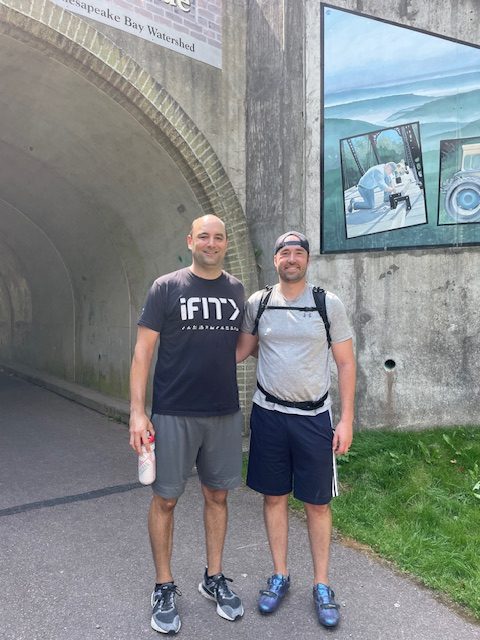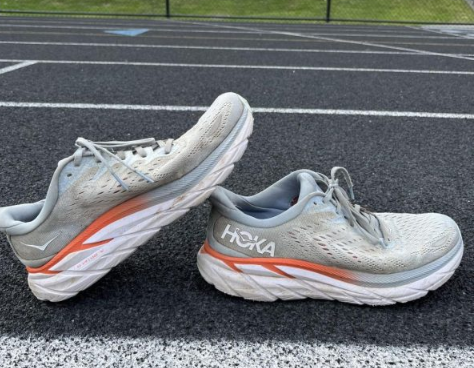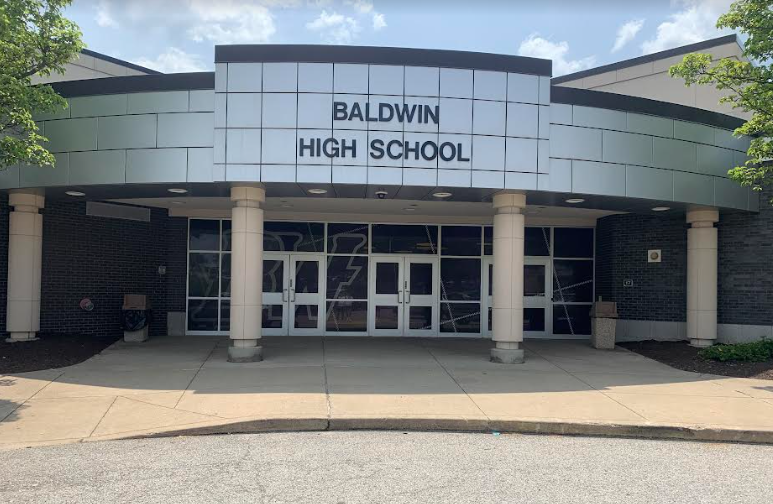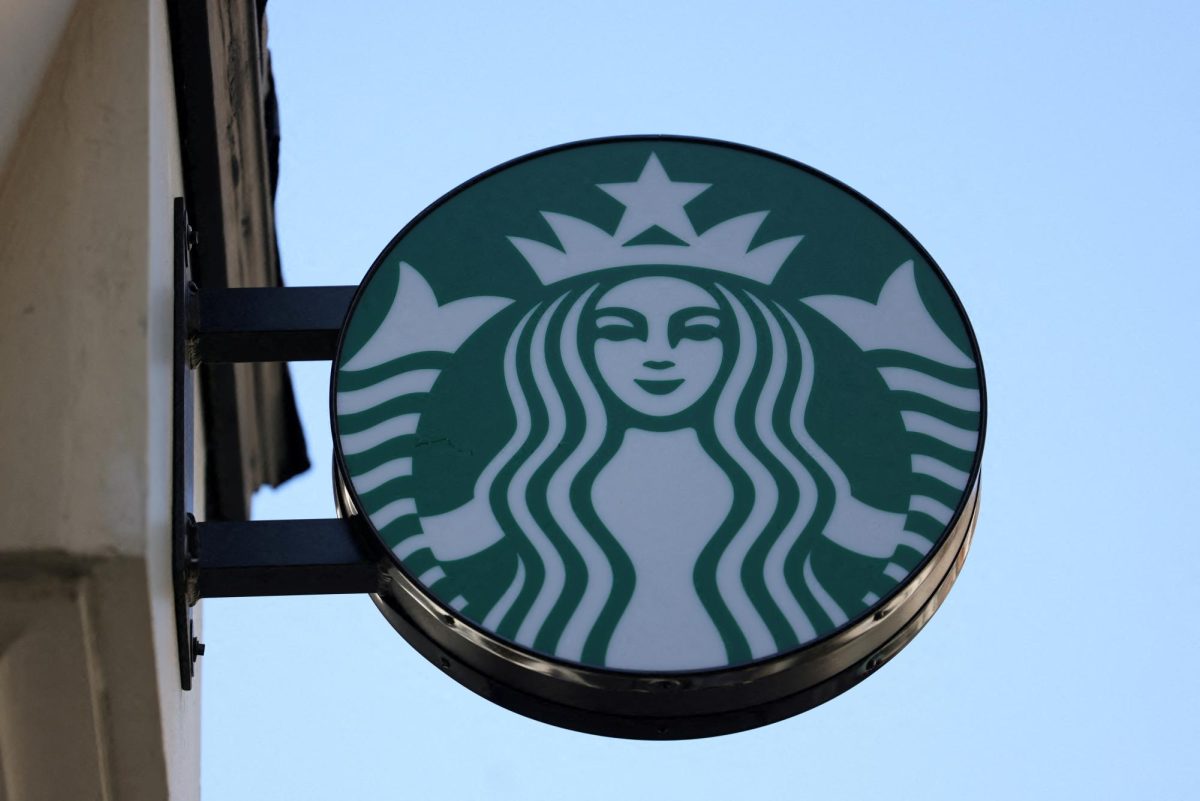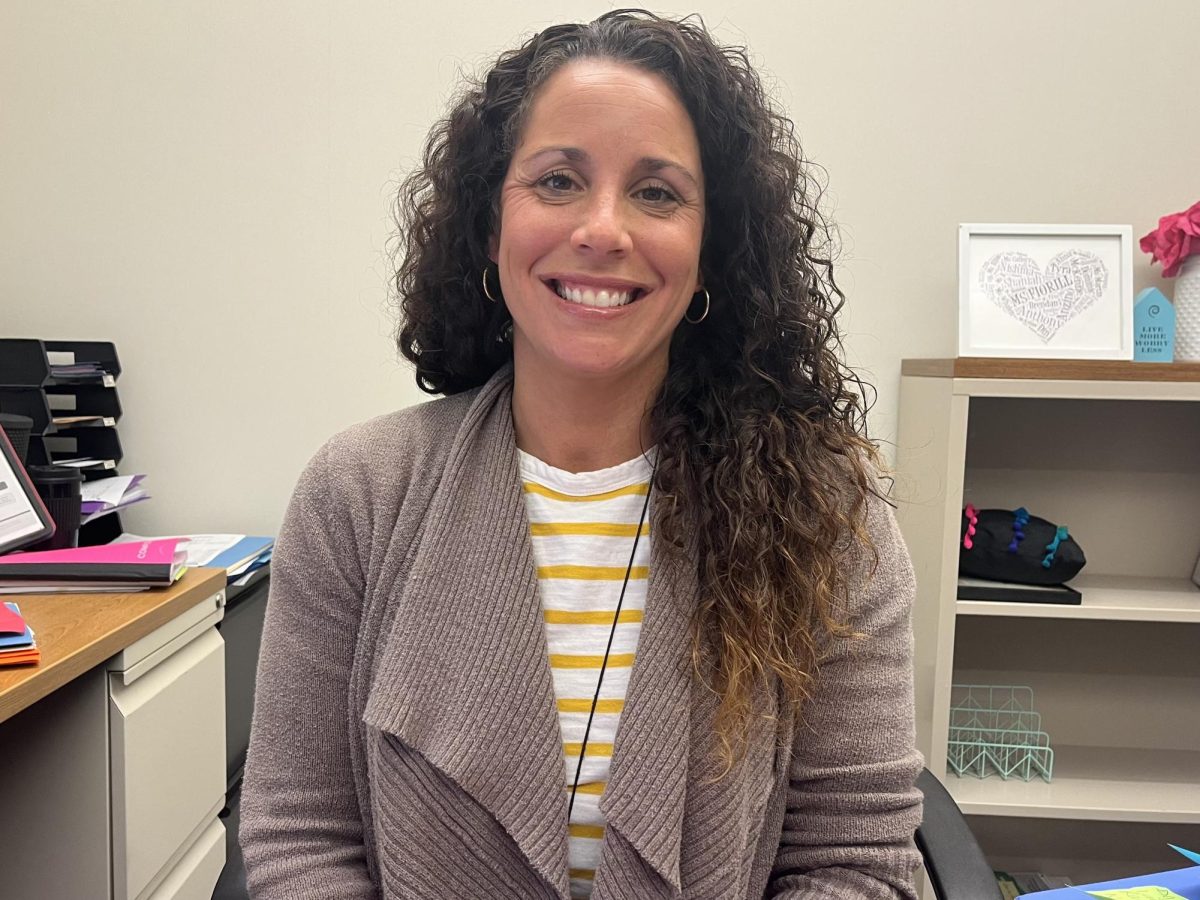Some teachers go to the gym in the summer to stay active. English teacher Jason Dolak rides his bike to Maryland and back.
“I enjoy biking in general and getting out and exercising,” Dolak said. “I look for ways to push myself a bit because I’m always taking myself to whatever that next level is. That next level for me was finding a way to do overnight trips.”
For the past three summers, those overnight trips have been along portions of the Great Allegheny Passage. Along converted old railroad tracks, the GAP stretches from Pittsburgh to Washington, D.C..
For his bike trips, Dolak varies the route each year, but he starts in Western Pennsylvania and wraps up around Cumberland, Maryland. Sometimes he takes a train for a portion of the return trip, but each year he bikes about 150 miles over 3.5 days total.
He eventually plans to bike all the way to Washington, D.C.
“The only thing holding me back is … the trail that starts in Cumberland, Maryland, and takes you all the way to D.C.,” Dolak said. “It’s a little less friendly to the type of riding I do.”
Dolak spends all year preparing for the summer trip by riding on different trails and staying active. He started biking more consistently a few years ago.
“I’m kind of always preparing because I use a stationary bike when I’m at home during the winter months, and during the spring and summer months I’m taking rides on my own on the different trails that are near Pittsburgh,” Dolak said.
He said biking has been a part of him his whole life. He picked it up more seriously post-pandemic and after his son was born, as he was seeking a replacement for participating in organized team sports.
“I used to run a lot and play sports like basketball, but biking came into the picture around 2019, about a year after my son was born,” Dolak said.
He uses biking to relax and “check out” mentally. Dolak doesn’t think of biking as a mental burden but a calming hobby.
“My wife is always surprised when I return feeling refreshed because she expects me to be exhausted,” Dolak said.
He bikes around six hours daily during the annual trip, covering 40 to 50 miles. To keep himself energized while biking, Dolak brings high-protein snacks and also eats at restaurants along the trail.
“Beef jerky, trail mix, and protein bars get me through each day’s ride. We end each day in a trail town, so we go to local restaurants for our evening meals,” he said.
Although he hasn’t been rained on yet, he takes precautions in case bad weather occurs.
“I bring a poncho and some rain gear. I have some other protective bags for my phone and other electronic devices but that’s kind of it,” Dolak said. “If it rains, you have to either just wait it out or power through, depending on how bad it is.”
It’s a bike-friendly trail even for newer riders, he said. Its inclines aren’t bad and there are rarely any curves.
“There’s a slight incline if you’re going south but it’s a very manageable grade going that direction for quite some time,” Dolak said. “When you get to the Eastern Continental Divide, at that point there’s a pretty steep drop.”
But planning is essential, Dolak said.
“You have to know where you’re staying, how long you think it’s going to take for you to get there, and just have all of those plans initially set up for you,” Dolak said. “Once you do that, if you love biking, you can take it as slow or as fast as you want.”
He said the Great Allegheny Passage separates itself from the other trails in America.
“The GAP, because of its distance, has a lot more organization around it, more people working on it, a website dedicated to it,” he said. “There’s a lot more coordination for that trail than any others that I’ve been on.”
The GAP is a popular trail for bikers, even though it was completed only recently, Bryan Perry, the executive director of the Great Allegheny Passage Conservancy, said.
“The last section of the Great Allegheny Passage was completed in 2013,” Perry said. “Our numbers indicate just under a million visits each year.”
The GAP is also a non-motorized trail, meaning the only vehicles on the trail are bicycles and authorized maintenance vehicles.
It has several landmarks, including the Big Savage Tunnel. Spanning 3,300 feet, the tunnel is located near mile marker 23 of the trail.
“It’s definitely the longest tunnel I’ve been through not in a car. It is colder than I expected,” Dolak said. “That experience – along with some of the other smaller tunnels that are there, the viaducts, and a couple of other bridges you go over – make it for a really cool ride.”
His brother-in-law, Andy Urban, rode with him this year. Urban is also an avid biker, logging between 200 and 400 miles on trails yearly.
“He had talked about his long multiple-day rides in the past. When he asked me to join him this year, I was excited to jump at the chance,” Urban said.
Despite the positives and ease of this trip, there are still challenges with planning and preparing.
“We had to plan what to carry on our bikes as there is not a lot of room: What clothes to bring, what shoes to wear, do we take an extra pair of shoes, what food to pack and eat on the trail, what kind of things we need for overnight,” Urban said.
Throughout the GAP, unused railroad tracks have been converted into bicycle paths. The GAP was designed, built, and is maintained by local trailbuilders in Pennsylvania and Maryland, and coordinated by the Great Allegheny Passage Conservancy, Perry said.
Perry said the trail took 35 years to build from start to finish. Along with the time required for building, there were many challenges.
“While local volunteers could steadily build flat sections of trails, getting these old railroad structures converted from railroad to bicycle trail took professional engineers and millions of dollars,” Perry said. “Getting the money raised and deploying big engineering firms to make those projects happen were the most significant challenges.”
Despite these challenges, the Great Allegheny Passage is one of the most popular biking trails nationwide.
“We were the first path named to the Rails-to-Trails Conservancy’s Hall of Fame,” Perry said.
The GAP is part of a larger plan to connect existing paths into a route called the Great American Rail Trail, which eventually would run from Washington, D.C., to Seattle, Washington. The route is already more than 50 percent complete, and a large portion of the necessary trail gaps are already included in state and local plans, Perry said.
The GAP can bring families who bike it closer together, deepening their bond and creating new memories with each other.
“I think our bike ride has made us closer. It was great for the two of us to spend all of that time together, biking, staying at Airbnbs, and helping and depending on each other,” Urban said.

